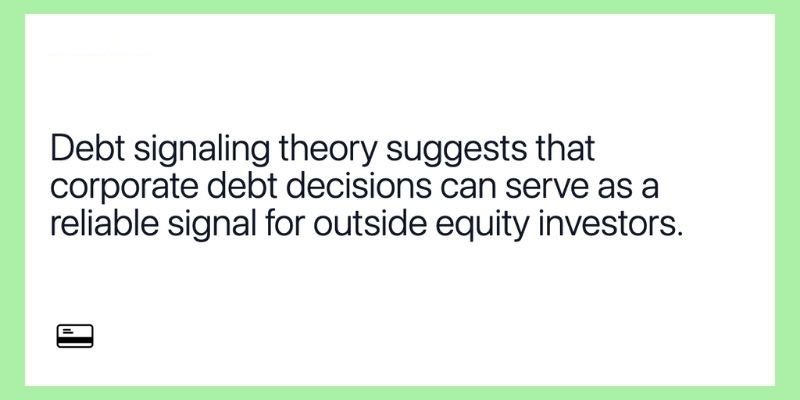Why Not Buy Before the Dividend and Then Sell?
Sep 27, 2024 By Kelly Walker
Are you looking to make some extra money in the stock market? If so, you may have heard of those claiming they can make a quick buck from investing. While this may be true in some cases, one strategy you'll want to re-evaluate is buying before the dividend and then selling.? Buying before a dividend announcement presents an interesting opportunity; however, risks are associated with it.
In this blog post, we will look at why not buying before the dividend and then selling could be your best move when investing in stocks. We’ll review both the potential rewards as well as the potential pitfalls associated with this approach.
What Is The Point of Buy Before Dividend and Then Sell Strategy

The buy before dividend and then sell strategy is a popular investment approach among novice investors. This strategy involves buying and selling stocks before the company issues dividends after the payout.
You can purchase stocks at a lower price and then receive the dividend payment, which increases your return on investment (ROI). In theory, this approach can be very lucrative; however, several risks are associated.
For one, the market may be volatile, and stocks could drop in value after the dividend is issued. It’s also possible that the stock price could rise instead of falling.
Additionally, it would be best to consider taxes when using this strategy. The dividends paid by a company may be subject to capital gains tax if sold shortly after they are issued.
Finally, buying before the dividend announcement means risking large amounts of money if you cannot accurately predict how the markets will move—a daunting task even for seasoned investors.
Advantages of the Buy-Before-Dividend and Then Sell Strategy

One of the main advantages of buying before a dividend announcement and then selling is that you could earn a higher return on your investment. This strategy involves purchasing stocks at their current market price before a company announces an upcoming dividend payout.
If the stock value rises after the announcement, you can sell at a higher price. You can make more money than if you had held onto the stock until it paid its regular dividends.
Another advantage is that there may be less risk involved in this approach compared to other investments with similar returns. Since you are only buying and selling once, there is less chance for losses due to market volatility or changes in interest rates.?
Finally, you can also benefit from tax advantages by buying before the dividend and then selling. Generally, capital gains from selling stocks are taxed lower than income from regular dividends. Thus, you can pay less in taxes if you choose to sell your shares after the announcement of a dividend payout.
Overall, buying before the dividend and selling have advantages for those looking to make extra money on their investments.
Disadvantages of the Buy-Before-Dividend and Then Sell Strategy
One key disadvantage of the buy-before-dividend and then-sell strategy is that it involves a high degree of risk. When investors purchase stock before a dividend announcement, they must accurately predict how the market will react to the news to reap potential profits.
If they guess incorrectly, their losses can be significant. Moreover, if the stock falls after the dividend has been announced, investors may be unable to recoup their initial investment as quickly or easily as they'd hoped.
Another disadvantage to this strategy is that it can sometimes lead investors to make rash decisions without considering all of the facts and research surrounding a particular stock. Making decisions based on emotions can be extremely detrimental to an investor's portfolio, often leading to rash decisions that can result in large losses.
Finally, investors should know that buying before the dividend announcement and selling may only sometimes yield a greater return than simply holding onto the stock through the full period.
If the stock price moves up or down significantly after the dividend is declared, investors who sell early will miss out on potential profits. As such, investors must consider all their options before deciding when to sell a stock.
In conclusion, while buying before the dividend and then selling may present some interesting opportunities for short-term gains, there are also several risks associated with this strategy that must be considered.
When You Should Avoid the Buy-Before Dividend and Then Sell Strategy
- The buy-before dividend and then-sell strategy can offer potential rewards but comes with several risks. Therefore, investors should avoid this approach for the following reasons.
- You may need help to predict when dividends will be paid out. Dividends depend on various factors, including business performance and market conditions. If you buy ahead of an expected dividend announcement, there’s a chance the company may not declare it at all or that the amount is lower than what you had anticipated.
- You could face significant losses if the stock price drops after you purchase it. When buying before a dividend announcement, you risk incurring losses if the stock decreases in value after the announcement is released. This could result in more money lost than gained from dividends collected.
- Short-term capital gains tax rates can be high. This strategy has tax implications when investing for short-term gains, such as higher taxes paid on any profits earned due to short-term capital gains tax rates.
Alternatives to the Buy-Before Dividend and Then Sell Strategy
Regarding investing, other strategies may be more effective than the Buy-Before Dividend and Then Sell strategy. Here are just a few of them.
Buying stock on dips
This strategy involves buying stocks when they dip in value or market sentiment is negative. Doing so allows you to take advantage of the price drops and profit if the stocks recover their value quickly.
Investing in the long-term
A long-term investment strategy involves holding onto stocks over an extended period so that you can benefit from their growth potential. It would be best if you also looked into diversification to reduce risk and increase your chance of success with this approach.
Dollar Cost Averaging
With dollar cost averaging, you invest the same amount of money into stocks regularly, regardless of price movements or market trends. This way, you purchase more shares when prices are low and fewer when prices are high.
Investing in mutual funds
Mutual funds give investors a diversified portfolio with minimal risk and effort. They also allow for periodic investments so that you can benefit from compounding returns over time without having to do any research on individual companies or sectors yourself.
FAQs
Can you buy a stock before the dividend and then sell it?
Yes, you can buy a stock before the dividend and then sell it. However, it is important to understand the risks of investing in stocks before any dividend announcement. Investing before a dividend is announced carries more risk because there is no guarantee that the company will issue a dividend or the amount if they decide to issue one.
What are the risks associated with buying before a dividend announcement?
The main risk of buying before a dividend announcement is that the dividend amount is not guaranteed. You will lose your investment if the company decides not to issue dividends.
How much money can you make from buying before a dividend?
The money you can make from investing in stocks before the dividend announcement depends on factors such as the stock's performance, market trends, and the company's decision.
Conclusion
Purchasing stocks before a dividend is paid and selling them after that is the best way to make the most of a market opportunity. However, investors need to be wary of utilizing this strategy with potential downsides like the risk of overpaying or being stuck holding an underperforming stock.
Though easy to implement, it’s important to remember that purchasing before dividends has advantages and disadvantages, making this approach potentially as risky as any other.
Moreover, if you’re looking for more lucrative trading approaches, you might be better off exploring alternative strategies, such as dividend reinvestment plans or leveraging multiple stock indices.

Form W-4: Employee's Withholding Certificate

Form 9465: Installment Agreement Request

What Is Debt Signaling?

How to Buy a Home With Good Resale Value

What Is Form 1095-C: Employer-Provided Health Insurance Offer and Coverage?

PNC points Visa Credit Card Review

What Is a Float-Down Lock in Mortgage Rates?

Bonds, Inflation, and Interest Rates Decoded

What is a Like-Kind Exchange

